

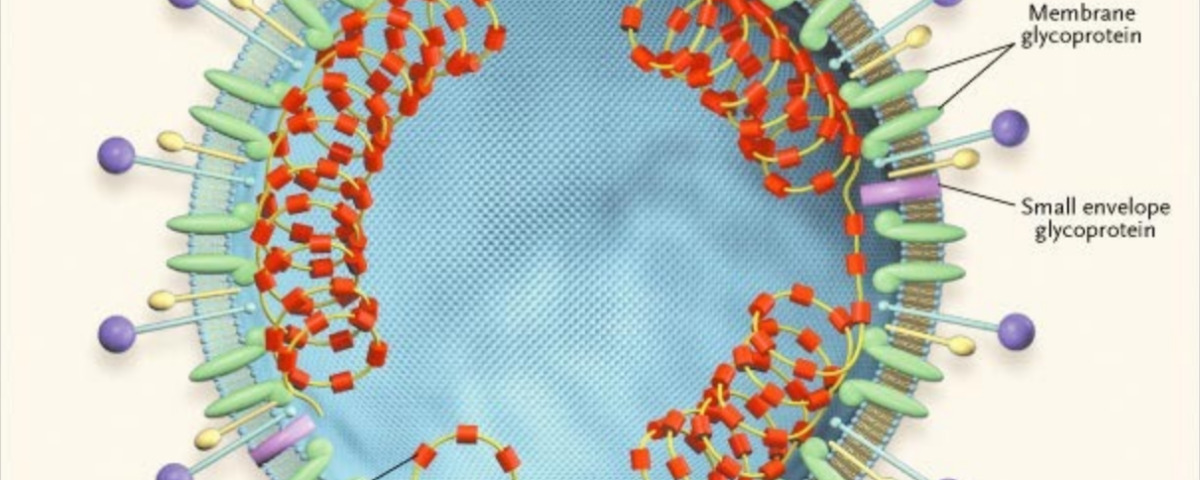
CoronaVirus
![]()
Although there is a lot of uncertainty about this virus, which can cause severe respiratory disease, there are many things that we do know. I wanted to share the most up to date facts, figures and evidence I have so far.
If you have specific questions you would like answered, please send me a quick message with it and I will look it up for you!
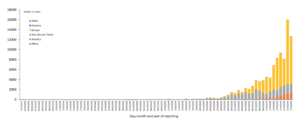
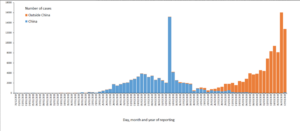
Corona virus is not a new thing, since the 1970’s there have been reported pathological conditions in domestic animals which attributed to CoV infections (Su & Wong, 2016). The coronaviruses are members of a family of enveloped viruses that replicate in the cytoplasm of animal host cells (Fields et al., 2001), and it has been reported that although human coronaviruses cause up to 30 percent of colds, they rarely cause lower respiratory tract disease (Homes et al., 2003), which is why they are referring to it as ‘novel’.
Six coronavirus species are known to cause human disease (Su & Wong, 2016). Four viruses — 229E, OC43, NL63, and HKU1 are prevalent and typically cause common cold symptoms in immunocompetent individuals (Su & Wong, 2016). The two other strains — severe acute respiratory syndrome coronavirus (SARS-CoV) and Middle East respiratory syndrome coronavirus (MERS-CoV) — are zoonotic in origin and have been linked to sometimes fatal illness (Su & Wong, 2016). MERS-CoV was the pathogen responsible for severe respiratory disease outbreaks in 2012 in the Middle East (Zaki et al., 2012).
Studies discovered these SARS (2003 and 2019) viruses are new groups of coronaviruses, and so they proposed that it is a new ‘novel’ fourth class of coronavirus (group 4) and that it be referred to as SARS-CoV (Peiris et al., 2003; Marra et al., 2003).
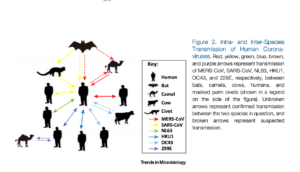
Coronavirus was the culprit for the SARS pandemic in 2002-2004 and Middle East respiratory syndrome coronavirus (MERS-CoV) in 2012. A massive clinical study in 2003 (Marra et al, 2003) states they used genome sequencing to determine that the virus named by the WHO as causally associated with SARS is a novel coronavirus. Many coronavirus cause the annual flu each year (Su & Wong, 2016), but are not as virulent as this group of SARS- CoV viruses.
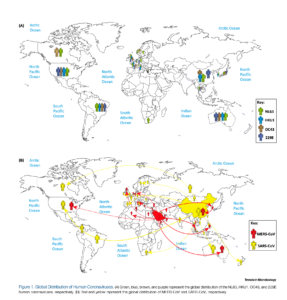
CoVID-19 receptor-binding gene region is very similar to that of the SARS coronavirus, and the virus has been shown to use the same receptor, the angiotensin-converting enzyme 2 (ACE2), for cell entry (McLintosh, 2020). CoVID-19 is the seventh member of enveloped RNA coronaviruses (Zhu et al., 2020) and is designated severe acute respiratory syndrome coronavirus number 2 (SARS-CoV-2).
There is a study by Wang et al., 2020 that suggest a way to treat COVID-19 in a test tube (in vitro). They found a combination of medicines as Remdesivir and Chloroquine are highly effective in the control of 2019-nCoV infection in vitro. Other medicines are also being trialed.
From the available current clinical research data for those women presenting from mid-trimester onwards the risks are similar to those non-pregnant adults (Yang et al., 2020). In two reports including a total of 18 pregnant women with suspected or confirmed COVID-19 pneumonia, there was no laboratory evidence of transmission of the virus to the neonate (McLintosh, 2020).
From most of the research that I have done, people should follow the recommendations of their government, as they are making decisions based on their research and scientific community.
They are attempting to reduce the impact on the healthcare system, based on the statistics of other countries and previous pandemics they are forecasting the number of people who will need hospitalization. They realize that they currently do not have enough ventilators, supplies and staff for the projected number of critical patients. This will likely not be our reality was we have begun preventative measures.
For the virus to stop infecting people, it must be starved or killed (so far, we do not know how to kill it), so we must reduce the hosts it can infect (social distancing is the most logical and best bet).
I understand the temptation to blame this situation on a laboratory leak or a human fabricated virus. Either way, it is occurring to us. Take time to realize this is a chance to slow down, spend time with family and reflect on what is really important.
Take care of yourself:
Exercise every day, read, eat healthy and open the windows.
Take care of your family:
Order books, do crafts, teach kids how to cook, do laundry and clean!
Take care of others:
Stay distant from others physically, not emotionally or verbally. Talk to others about how this is affecting you and your family.
This ‘New Studies’ website link is the most up to date research and studies (www.uptodateonline.com). The WHO’s website also has the most current information and statistics that is usually explained in a practical manner.
Keep informed, but do not obsess- let me do the research!! Send your questions and concerns via email or whatsapp.

Copyright ©2020 VitalityHealthSolutions, All rights reserved
Follow us @vitality_healthsolutions
https://www.instagram.com/vitality_healthsolutions/
Backer, J. A., Klinkenberg, D., & Wallinga, J. (2020). Incubation period of 2019 novel coronavirus (2019-nCoV) infections among travellers from Wuhan, China, 20–28 January 2020. Eurosurveillance, 25(5).
ECDC (2020). European Center for Disease Prevention and Control. https://www.ecdc.europa.eu/en/geographical-distribution-2019-ncov-cases
Fields, B. N., Knipe, D. M., Howley, P. M., & Griffin, D. E. (2001). Fields’ Virology Lippincott Williams & Wilkins, Philadelphia.
Holmes, K. V. (2003). SARS-associated coronavirus. New England Journal of Medicine, 348(20), 1948-1951.
Guan, W. J., Ni, Z. Y., Hu, Y., Liang, W. H., Ou, C. Q., He, J. X., … & Du, B. (2020). Clinical characteristics of 2019 novel coronavirus infection in China. MedRxiv.
Marra, M. A., Jones, S. J., Astell, C. R., Holt, R. A., Brooks-Wilson, A., Butterfield, Y. S., … & Cloutier, A. (2003). The genome sequence of the SARS-associated coronavirus. Science, 300(5624), 1399-1404.
McLintosh, K (2020). Coronavirus Disease 2019 (COVID-19). In Hirsch. M (Ed), UpToDate. Retrieved March 2020, from https://www.uptodate.com/contents/coronavirus-disease-2019-covid-19
National Institute of Health (NIH) (2020). NIH clinical trial of investigational vaccine for COVID-19 begins. Visit vaccine link news report here.
Peiris, J. S. M., Lai, S. T., Poon, L. L. M., Guan, Y., Yam, L. Y. C., Lim, W., … & Cheng, V. C. C. (2003). Coronavirus as a possible cause of severe acute respiratory syndrome. The Lancet, 361(9366), 1319-1325.
Su, S., Wong, G., Shi, W., Liu, J., Lai, A. C., Zhou, J., … & Gao, G. F. (2016). Epidemiology, genetic recombination, and pathogenesis of coronaviruses. Trends in microbiology, 24(6), 490-502.
Wang, M., Cao, R., Zhang, L., Yang, X., Liu, J., Xu, M., … & Xiao, G. (2020). Remdesivir and chloroquine effectively inhibit the recently emerged novel coronavirus (2019-nCoV) in vitro. Cell research, 30(3), 269-271.
WHO (2020). World Health Organization Website. https://www.who.int/emergencies/diseases/novel-coronavirus-2019
Yang, H., Wang, C., & Poon, L. C. (2020). Novel coronavirus infection and pregnancy. Ultrasound in Obstetrics & Gynecology.
Zaki, A. M., Van Boheemen, S., Bestebroer, T. M., Osterhaus, A. D., & Fouchier, R. A. (2012). Isolation of a novel coronavirus from a man with pneumonia in Saudi Arabia. New England Journal of Medicine, 367(19), 1814-1820.
Zhu, N., Zhang, D., Wang, W., Li, X., Yang, B., Song, J., … & Niu, P. (2020). A novel coronavirus from patients with pneumonia in China, 2019. New England Journal of Medicine.